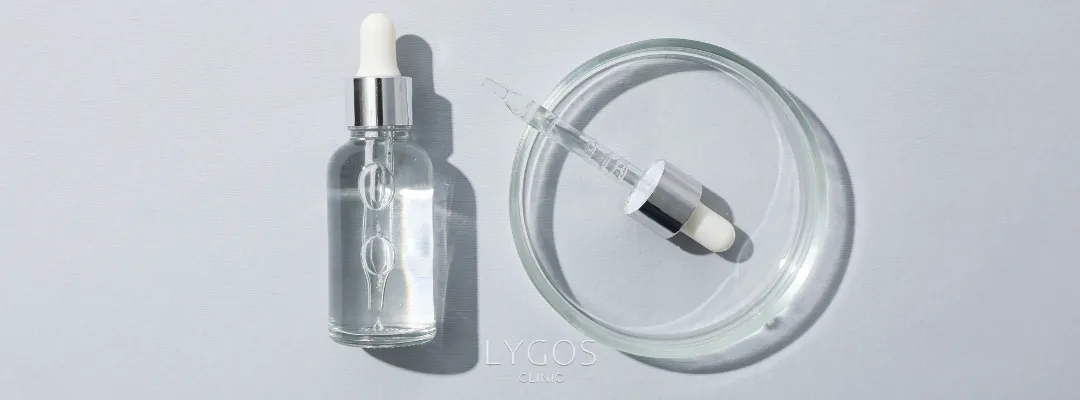What is Salicylic Acid? | How to Use & Benefits | LYGOS 2025

Salicylic Acid
Salicylic acid is a powerful ingredient that is frequently encountered in today’s skin care products and has become an indispensable part of beauty routines. However, many people do not have enough information about this active ingredient. In addition, these people may be confused about where salicylic acid comes from or what benefits it offers.
Learning important information about the origin of salicylic acid and its effects on the skin can be very useful to support your skin health. When used correctly, salicylic acid helps the skin look cleaner, smoother and healthier. So, what is salicylic acid? What does salicylic acid do? You can find the details and what you wonder in our article.
What is Salicylic Acid?

Salicylic acid, which has become very popular in skin care, is actually a beta hydroxy acid (BHA) and is extremely effective in skin cleansing. This acid, which helps to open the pores by gently removing dead cells accumulated on the surface of the skin, also has strong anti-inflammatory properties. It is especially known for its frequent use in acne treatment because it dissolves excess oil accumulated in the pores and purifies the skin deeply.
However, contrary to what many people think, salicylic acid is not limited to skin care products. This valuable ingredient can also be obtained from nature. This increases its appeal even more. Salicylic acid is naturally found in a wide range of products, from plants to fruits. This acid from natural sources can be used in many areas that can be beneficial not only for skin care but also for general health. Therefore, getting to know salicylic acid more closely allows you to make more informed choices in both skin care and health applications.
What Does Salicylic Acid Do?

Salicylic acid is an effective component in eliminating skin problems such as flaking, dandruff, warts and psoriasis thanks to its ability to dissolve in oil. While maintaining the natural oil balance of the skin, it targets the oil accumulated in the pores, opens the blockages and helps prevent skin diseases with its antibacterial properties.
This ingredient, which is frequently found in products such as shampoo, serum, tonic and lotion, is used in the treatment of blackheads, acne and psoriasis, while also contributing to the reduction of wrinkles. Before starting to add salicylic acid to your skin care routine, it is of great importance to determine your skin type and get the advice of a specialist doctor. This powerful ingredient supports the care processes by providing various benefits on the skin. So, what are the benefits of salicylic acid?
Cleans pores deeply: Factors such as seasonal changes, air pollution, oiliness and dead cell accumulation can lead to pore blockages. Salicylic acid removes these blockages and prevents skin problems such as blackheads, acne and sebaceous glands.
Prevents acne formation: Thanks to its antimicrobial properties, salicylic acid provides an effective defence mechanism against acne-causing bacteria. It is also frequently preferred in acne and acne treatments thanks to its anti-inflammatory effect that relieves inflammation.
Reduces hyperpigmentation: Sunburn and other external factors can cause irregularities in skin tone. Conditions such as melasma can cause brown spots called hyperpigmentation. Salicylic acid is among the acids used in the treatment of these spots.
It regulates the oil balance of the skin: With its oil-soluble structure, salicylic acid prevents the formation of sebaceous glands and acne by removing excess oils accumulated in the skin, giving the skin a more matte appearance.
Supports hair health: Fat cells accumulated in the scalp can cause hair to become oily. Salicylic acid helps the hair to gain a healthy and balanced appearance by controlling this oiliness.
Foods Containing Salicylic Acid

Salicylic acid is not only a compound produced in a laboratory environment, but also a powerful substance found in abundance in nature. Many plants and fruits contain salicylic acid in skin care and general health, and these natural sources stand out with their skin health-supporting properties. The answer to the question ‘What contains salicylic acid?’ sheds light on the different sources of this valuable compound and their effects on health, allowing you to understand the benefits of obtaining it naturally. Here are foods containing salicylic acid:
- Apples
- Strawberry
- Raspberry
- Grape
- Cherry
- Cucumber
- Broccoli
How to Use Salicylic Acid?

Salicylic acid is usually applied as a thin layer on cleansed and completely dried skin. It can be left on the skin or washed off in accordance with the time specified on the product’s label. The frequency and duration of use may vary depending on the product used and the needs of the skin. Therefore, it is very important to carefully read and follow the instructions of each product in order to achieve the desired results.
What are the Side Effects of Salicylic Acid?

Side effects of salicylic acid usually occur with improper or excessive use. This can lead to undesirable results such as peeling, dryness and irritation on the skin. After maintaining the oil balance, reactions such as burning, tingling or itching may occur in the upper layer of the skin.
When such symptoms are noticed, it would be the best step to stop the use of salicylic acid and consult a dermatologist. In addition, sunscreen should be used after salicylic acid application. Because this acid sensitises the skin, making it more vulnerable to sun rays and may cause stains.



